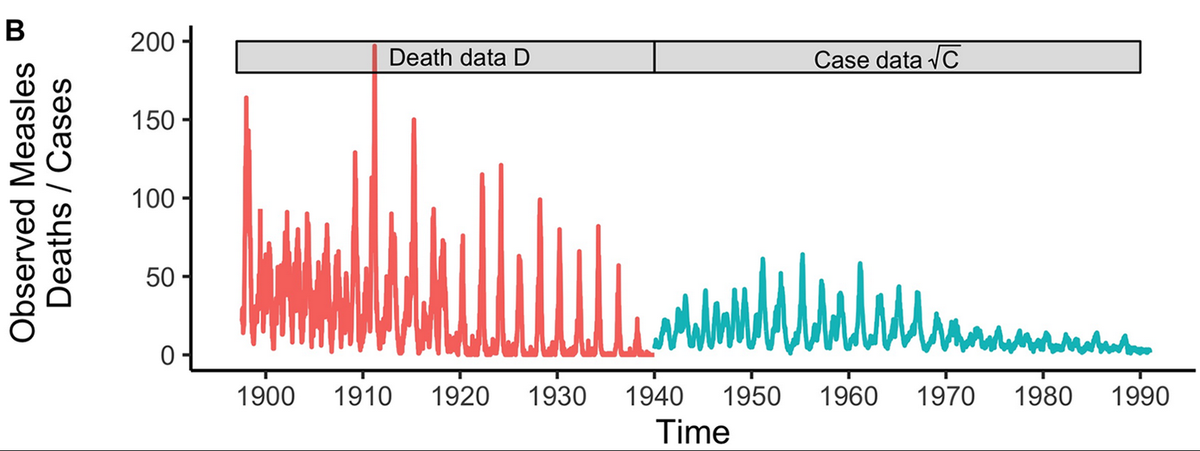What happens when a population reaches herd immunity? Does it mean epidemics suddenly stop forever? Unfortunately not... 1/
The herd immunity threshold is when susceptibility is reduced to point where R=1, i.e. epidemic remains flat (the precise value of threshold can depend on population structure, e.g. https://www.quantamagazine.org/the-tricky-math-of-covid-19-herd-immunity-20200630/).">https://www.quantamagazine.org/the-trick... But even if this happens, R won& #39;t stay equal to 1... 2/
Over time, births will increase the proportion of the population susceptible. This will mean R>1, so we& #39;d expect an outbreak in the (mostly young) susceptible group, which reduces R<1 again, with R=1 on average over time. In other words, the disease has become & #39;endemic& #39;. 3/
This is why many endemic infections are diseases of childhood - for example, in populations that don& #39;t vaccinate again chickenpox, outbreaks occur among younger susceptible groups, who (in the case of infection with chickenpox virus VZV) then develop some immunity. 4/
The frequency of these outbreak-then-immunity cycles depends on transmissibility of the infection. In the Pacific, each dengue serotype typically causes outbreaks every 12-15 years ( https://wwwnc.cdc.gov/eid/article/20/6/13-1413_article),">https://wwwnc.cdc.gov/eid/artic... which is what we& #39;d expect from simple epidemic model including births 5/
Measles (before vaccination was introduced) was more contagious, and hence required fewer new susceptibles to cause outbreaks, so came back every year or two ( https://journals.plos.org/ploscompbiol/article?id=10.1371/journal.pcbi.1007305).">https://journals.plos.org/ploscompb... 6/

 Read on Twitter
Read on Twitter


